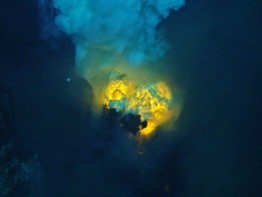In ancient Earth history, the sun burned as much as 30 percent dimmer than it does now. Theoretically that should have encased the planet in ice, but there is geologic evidence for rivers and ocean sediments between 2 billion and 4 billion years ago. Scientists have speculated that temperatures warm enough to maintain liquid water were the result of a much thicker atmosphere, high concentrations of greenhouse gases or a combination of the two.
Read more at UW Today »UW scientist and team call for a new way to classify planets
Thousands of planets will likely be discovered in the next few years, and a new system is needed to better classify the ability of those worlds to support life. In a paper to be published in the December 2011 issue of Astrobiology, co-author David Catling from the Department of Earth and Space Sciences and colleagues propose a new system that classifies some planets as either similar to Earth or not similar but capable of harboring life.
Read more at The Seattle Times »Fiery volcano offers geologic glimpse into land that time forgot — with video
The first scientists to witness exploding rock and molten lava from a deep sea volcano, seen during a 2009 expedition, report that the eruption was near a tear in the Earth’s crust that is mimicking the birth of a subduction zone. Scientists on the expedition collected boninite, a rare, chemically distinct lava that accompanies the formation of Earths subduction zones. Nobody has ever collected fresh boninite and scientists never had the opportunity to monitor its eruption before, said Joseph Resing, University of Washington oceanographer and lead author of an online article on the findings in Nature Geoscience.
Read more at UW Today »


